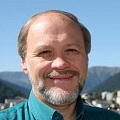As of 01.11.2022
The importance of the understanding of the recent and past changes in the ozone layer and the climate, and the forecasting of future changes, especially in the Russian Arctic and sub-Arctic, has important ecological, social, and economic implications and is recognised at the level of the government. The relevance of the problem is escalated by the absence of substantial proof of recovery of the ozone layer, the emergence of a massive ozone hole over the Arctic in the spring of 2020 and the formation of ozone mini-holes. Ozone layer research requires a consideration of the impact of natural and anthropogenic factors acting in the atmosphere from the surface of the Earth up to the near-Earth space.
Name of the project: The forecasting of the state of the ozone layer by means of modelling and measurement of the composition of the atmosphere
The objective of the project is to solve scientific and educational problems related to middle-term (up to a month) and long-term (up to 200 years) forecasting of the development of the ozone layer caused by natural and anthropogenic factors, climate change and the state of space weather. The main goals of the research are:
- The implementation and analysis of ground and satellite measurements of ozone, ozone-destroying substances (ODS) and the state of the atmosphere.
- The assessment of the past and the forecasting of the future behaviour of the ozone layer using modern models of photochemistry and the climate with consideration to various impacts, including the variability of greenhouse gases and ODS.
- The development of the new atmosphere-ionosphere-magnetosphere model and its application to the study of the impact of space weather on the variability of the ozone layer.
- The analysis of the middle-term variability of the ozone layer caused by perturbations of the atmospheric dynamics and space weather.
|
Hosting organization
|
Field of studies
|
City
|
Invited researcher
|
Time span of the project
|
|---|---|---|---|---|
|
Fluxes of potentially toxic elements and substances in river basins: research methodology, quantitative assessment and prediction
M.V.Lomonosov Moscow State University - (MSU) |
Earth studies and related Ecological sciences |
Moscow |
Konoplev Aleksei Vladimirovich
Russia |
2024-2028 |
|
Macromolecular design of polymeric materials for medical and technical purposes
I.M. Sechenov First Moscow State Medical University - (Sechenov University) |
Earth studies and related Ecological sciences |
Moscow |
Kostjuk Sergei Viktorovich
Belarus |
2024-2028 |
|
Laboratory «Soil Health»
Southern Federal University - (SFedU) |
Earth studies and related Ecological sciences |
Rostov-on-Don |
Wong Ming Hung
, United Kingdom |
2022-2024 |




